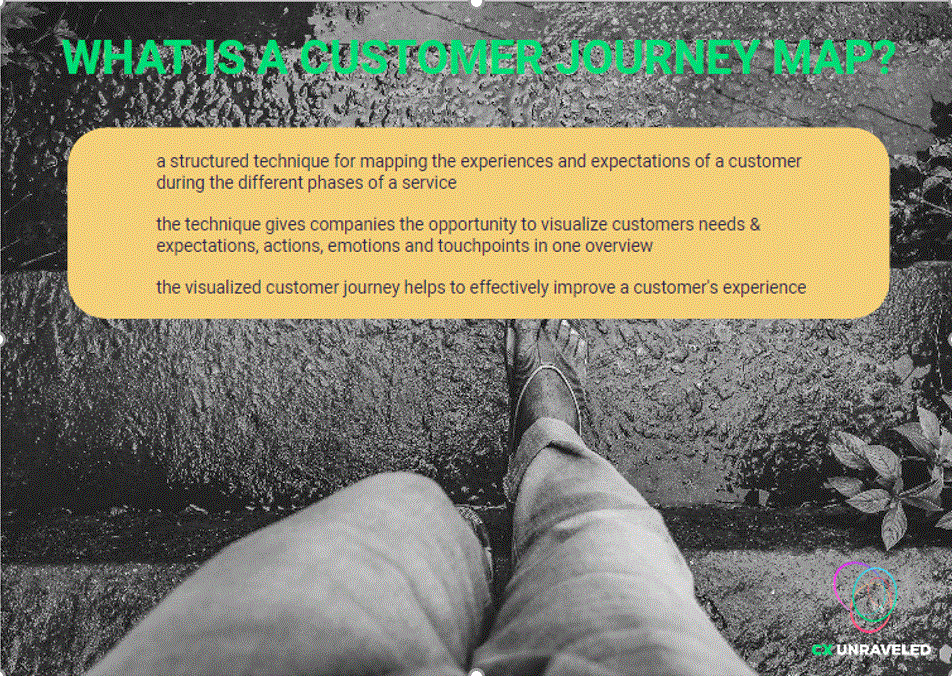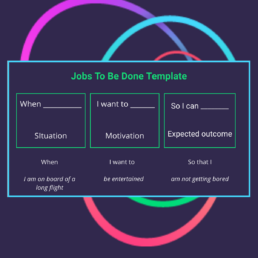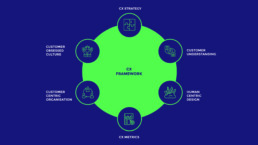What do your customers really want? How to make Jobs To Be Done!
A few months ago, we talked about Jobs To Be Done and the 5 key elements you should be aware of when starting to formulate the JTBD's for your own company. We made clear that companies should define the market they’re in from perspective of the Jobs that their customers are trying to achieve, not the current products the company is offering. Products are just a solution meeting a customer need. These solutions will be replaced if a better one comes to market. For the full article on introduction of JTBD, please check out https://cxunraveled.com/jobs-to-de-done/
Using JTBD can help you to move away from the current solution and open a new perspective and look for opportunities for new solutions. Or it makes it clear what current product features don’t give value to the customer’s Job.
But how to write your Job to be Done for your own customers?
Like with many CX and service design tools and concepts, we have a template for that ;-)
When ____ (situation), I want to _____ (motivation) so that I can _____ (expected outcome)
JTBD can be used in every business context as well as in your personal context. We all have many jobs to do every day! Sounds busy? Doesn’t have to be, as long as you find a good solution for your job to relax at certain times, it will be fine!
Some examples make it more concrete:
- When I am on board of a long flight, I want to be entertained so that I won’t get bored
The airline will try to find a solution to entertain their customers by offering free movies and wifi. Or they could also directly target the desired customer outcome (not getting bored) by offering some extra service and personal attention
- When I move to my new apartment, I want to have energy supply, so that I can heat my home
- When I received a new painting for my birthday, I want to hang it on my wall in my living room, so I can enjoy it every day while I sit on the couch
To hang the painting, customers will buy (or rent) a drill. Not because they want to have a drill, but because they need a hole in the wall to attach the painting. If new solutions like a very strong scotch tape, or self-attaching paintings will come on the market, customers won’t look for a drill anymore to hang a painting.
Personas and Jobs To Be Done
Personas let you step into the shoes of your customers. They tell who your customers are, what they do and what makes them tick and what doesn’t.
As you can see, JTBD start with describing a specific situation – the context – and pinpoints what is motivating / driving a customer for that specific job to potentially interact with you.
We think that JTBD are a valuable addition to personas, so that you can not only empathize with your customers but also optimize or innovate your current solutions. Our advice is to identify the JTBD specifically for every persona in each customer journey they have with your company to get the best result.
We hope this clarifies and makes you start using jobs to be done within your own company. If your job to be done in reading this blog was to learn how to formulate a JTBD for your customers, then I hope this helped!
Customer Journey Maps: Hype or Hope?
Over the past months quite some companies have approached us with the request to help them create customer journey maps. Which got us thinking - is this a hype which will blow over? Or is it the start of a hopeful process towards creating better customer experiences? I definitely think it should be the latter – HOPE. However, in order for customer journey maps to lead to better customer experiences, there are some important conditions which need to be met.
Before we dive deeper into these conditions, I’d first like to briefly share with you what a customer journey map is.

To elaborate more on this, a customer journey map literally visualizes the steps a customer takes when they interact with a specific service (or product for that matter) offered by a company. By understanding which steps a customer takes and examining their emotions during these steps, we’re given pretty important clues about which aspects of the customer journey need improvement. You’ve got it – one of the first things is to examine the steps where customers experience a negative emotion and see if you can improve those.
Now, back to the important conditions which need to be met in order for customer journey maps to actually lead to better customer experiences:
- Always base your customer journey maps on data verified persona’s. If your company has 6 different persona’s for instance, you need to create a journey map for each of these as your the needs, emotions and actions of these persona’s could differ greatly. Imagine the difference between the customer journey’s of a mom with children and a senior citizen in a supermarket. We know of a Dutch bank who actually has 300 different customer journeys – a mix of persona’s and the different products & services they offer.
- If you choose not to map a customer journey together with your customers (which might not be a bad choice if you have a lot of internal uncertainty which needs to be solved first), see if there is prior research & data available on which you can base your work. After that, do make sure that you validate the customer journey you created with actual customers who fit your persona. You might be surprised how many assumptions or hypotheses you have which don’t hold true when actually validating with customers.
- Once you’ve created and validated your customer journey map – SURPRISE – you’re not done. A customer journey map is not an end product, but a living document. If you want to ensure you deliver a consistent & great customer experience, you need to put into place measurements which help you monitor whether you are achieving the desired experience. Once those measurements dive under your target, it’s time to take a deeper look at that specific step in the customer journey and see how you can improve it. Make sure your management is also aware of this and support your continuous efforts to improve the customer experience.
If you take these conditions into account when mapping your customer’s journeys, you’re starting with a solid basis to actually create great customer experiences. Go for it! And if you need any help, don’t hesitate to reach out to us.
Customer Experience Framework
CX Framework - 6 disciplines you need to master to excel in Customer Experience
More and more companies are now realizing that Customer Experience is the new competitive battleground for businesses. They vow to be customer focused and look at solving pre existing blind spots. But to break out of the find-and-fix cycle and find ways to differentiate yourself as a company, you need to make the next step: managing from your customer’s perspective in a systematic, repeatable and disciplined way. To do that, you need to routinely perform the 6 disciplines from the CX Framework. This Framework is being used by the CXPA (Customer Experience Professional Organization) and also by CX Unraveled in our offer of Deepdive Masterclasses. In this blog, I break down these 6 competences in an easy to digest way:
- CX Strategy
‘Good experiences don’t happen by accident, they are created by design’
This is your north star, or game plan: here you describe the intended CX you want to deliver, and you make sure it is linked to your overall company strategy, brand values and customer needs.
- Customer Understanding
‘Know what your customers want most and your company does best’
Key input for all other disciplines is your 360” customer view: Understanding who your customers are, their wants, needs, and how they perceive interactions with your company.
- Human Centered Design
‘Solve the right problem before you solve the problem right’
Following a structured design process is needed any time a pain point is fixed or a value point is created. Key is to have this process human centered, collaborative, and iterative.
- Customer Centric Organization
Key is to schedule your priorities, not to prioritize your schedule
Here it’s all about getting things done, and making sure that you manage CX in a disciplined and proactive way. Break the silos and have shared priorities and accountability.
- CX Metrics
If you can’t measure it, you can’t improve it
With the right metrics being put in your CX KPI framework, you can quantify your CX quality in a consistent manner, monitor your progress, and put CX at par with financial KPIs.
- Customer Obsessed Culture
Culture eats strategy for breakfast
This is your company DNA: shared values and behaviors of your staff needed to deliver great CX. This is what your employees do when you’re not in the room and is key in CX delivery.
More info per discipline can be found at the description section of our DeepDive Masterclasses. Additionally, in our upcoming blogs we will get back to some questions we often get on these disciplines. Questions such as: how are they related, where to start, is there a needed order in development, how mature are companies on the various elements and which topics are covered where?


